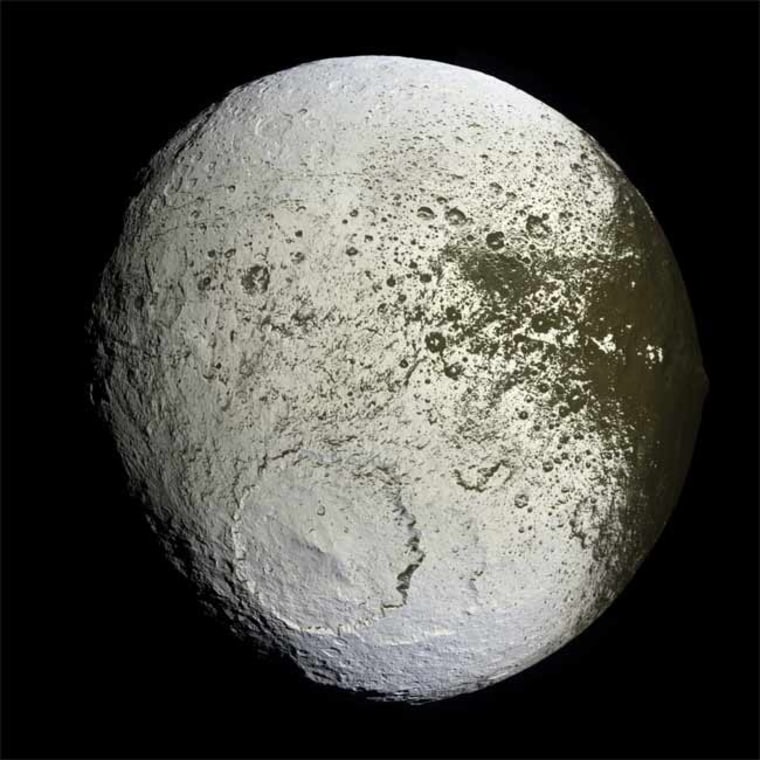Saturn's moon Iapetus has virtually no gray. Rather, its features are all stark black and white. The appearance has long puzzled astronomers.
New detailed images suggest sunlight is melting ice on one side of Iapetus, leaving the moon's dark surface exposed, while the opposite half retains its reflective ice-mixed shell.
Since the moon's discovery by Giovanni Domenico Cassini in 1671, Iapetus' appearance has baffled astronomers. The leading edge of Iapetus, which faces the direction of its orbit, is black as asphalt, while its trailing side appears bright as snow. Iapetus is 907 miles (1,460 kilometers) wide and circles Saturn at a distance of about 2.2 million miles (3.6 million kilometers).
High-resolution images of Iapetus acquired last month by the Cassini-Huygens spacecraft during its low pass over the moon have uncovered telling details on its surface that may well yield the reason for its strange bright and dark patterns.
"While there are many details yet to be worked out, we think we now understand the essence of why Iapetus looks the way it does," said Carolyn Porco, the leader of the imaging team at the Space Science Institute in Boulder, Colo.
The new observations add support to a two-part explanation for Iapetus' appearance. First, as Iapetus treks around Saturn, its leading edge scoops up a thin coating of dark material, which amplifies sunlight absorption.
Slideshow 12 photos
Month in Space: January 2014
"Dusty material spiraling in from outer moons hits Iapetus head-on and causes the forward-facing side of Iapetus to look different than the rest of the moon," said Tilmann Denk, Cassini imaging scientist at the Free University in Germany.
Over time, as the blackish surfaces warm, the rate of evaporation increases until finally all the surface ice in that region melts away. Infrared observations from the Cassini flyby confirm that the dark dust material is approximately 230 degrees below zero Fahrenheit (minus 146 degrees Celsius) — warm enough for the release of water vapor from the ice.
The water vapor formed then condenses on the nearest cold spot, such as along polar regions and icy areas at lower latitudes on the trailing side of the moon. In that way, the dark material loses the mixed-in ice and gets even darker, while the bright material accumulates more ice and gets brighter, in what the astronomers call a runaway process that leaves no gray area.
An earlier version of this story included an incorrect reference to the temperature on Iapetus.

